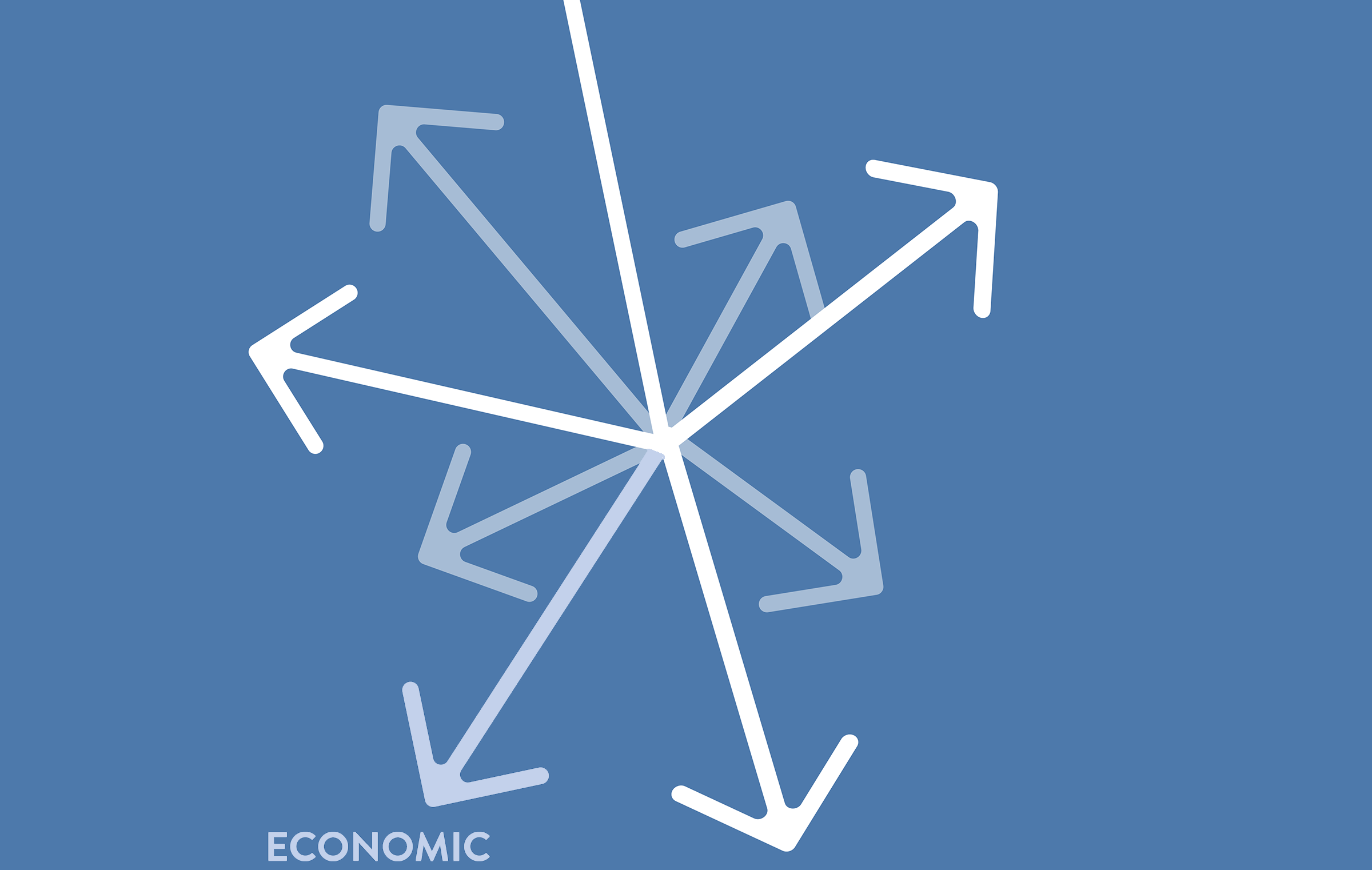
Privatisation
If you are poor which technology could change your life expectancy?
Privatization is the transfer of ownership and government functions from public to private bodies,
which may consist of voluntary organizations and for-profit and not-for-profit organizations.
In the last decade, privatization has been frequently used as a policy instrument to reduce the
financial burden of the public sector. In most countries, there is a mix of public and private interests in healthcare.
What do we know?
According to privatization's supporters, this shift from public to private management is so profound that it will produce a panoply of significant improvements: boosting the efficiency and quality of remaining government activities, reducing taxes, and shrinking the size of government. In the functions that are privatized, they argue, the profit-seeking behavior of new, private sector managers will undoubtedly lead to cost cutting and greater attention to customer satisfaction.
What do we not know?
Privatization damages the public sector because of a lack of flexibility, loss of capacity, and risks of bailouts.
The reality is that most newly privatized companies need dominant, experienced shareholders to compensate for the weaknesses of managers never exposed to best business practices. Without the support and prodding of such shareholders, many companies tend to operate very much along the lines learned in the days of central planning, insider control, and relentless focus on production.
Is it possible to rethink a future reduction in privatization?
Inspiring Examples
Many types of institutions and facilities typically run by public officials, or governments can and have been privatized. These include, among others: prisons, public schools and universities, hospitals, highways, airports and harbors, public utilities (water, electricity), waste disposal; mail delivery, and communications infrastructure.
References
More Prevention, Less Cure
From popular wisdom: better safe than sorry
The healthcare ecosystem is expected to shift over the coming years due to ageing populations, lower fertility, and increasing prevalence of disease occurrence and detection around the world.
By adopting a new approach leveraging preventive medicine we can positively impact patient health and reduce resource constraints that undoubtedly occur with the increase in demands.
What do we know?
Digital tools are helping enact social distancing, trace contacts, and save lives. Even in normal times, the difficulty of treating any ailment increases over time. There is a huge incentive for healthcare providers to be able to intervene early, and prevention is a step better than early intervention. However, it's impractical for everyone to visit a GP every day, and difficult to spot the micro changes in diagnostics that tell us where problems might arise before they do. What technology will help us to do is drive down the cost of monitoring our health and make it achievable at scale.
What do we not know?
Despite several strengths, significant challenges remain. Governments need the whole nation to focus on the future: rising levels of obesity, mental illness, age-related conditions like dementia, and a growing, ageing and diversifying population, often living with multiple, long-term conditions such as diabetes, asthma and arthritis.
Securing nation's health requires a significant and sustained effort to prevent illness and support good physical and mental health. People need to see a greater investment in prevention - to support people to live longer, healthier and more independent lives, and help to guarantee health and social care services for the long-term.
Inspiring Examples
Consumers—armed with this highly detailed personal information about their own health—will likely demand that their health information be portable. Consumers have grown accustomed to transformations that have occurred in other sectors, such as e-commerce and mobility. These consumers will demand that health follow the same path and become an integrated part of their lives.
References
- https://assets.publishing.service.gov.uk/government/uploads/system/uploads/attachment_data/file/753688/Prevention_is_better_than_cure_5-11.pdf
- https://www.imf.org/en/Blogs/Articles/2021/12/02/the-economics-of-health-and-well-being
- https://www.publicissapient.com/insights/future-ecommerce-trends
- https://health.gov/healthypeople/objectives-and-data/browse-objectives/preventive-care" target=_blank>
Tech Giants' Pervasiveness
Amazon is the new pharmacy?
Tech giants are rigorously exploring every market as a new frontier for innovation and business expansion. With a long-term vision, they are integrating technology to solve complex health challenges and improve healthcare delivery.
The core of this convergence lies in the integration of Artificial Intelligence, machine learning, cloud computing, and other cutting-edge technologies. These are being employed across a myriad of applications such as diagnostic imaging, patient monitoring, and disease prediction, aiming to bolster patient care while mitigating costs.
What do we know?
This merger of tech and healthcare is also marked by a consumer-centric approach, as witnessed through the advent of wearables and health applications. These innovations are rendering healthcare more accessible and personalized, empowering individuals to monitor and manage their health seamlessly. Tech companies entering the sector will lower the threshold for accessible diagnostics. While many can't afford to spend $150-200 on a dermatologist consultation to check a new birthmark, they may spend a few dollars in an app to have it checked - and thus have a better chance to catch a malignant lesion in time.
What do we not know?
The global healthcare industry has reached a record market value of 11 trillion USD and will continue to increase in line with population growth. Innovation occurs following the existence of a 'need.' The traditional healthcare approach is rapidly becoming outdated and needs a way to deal with massive increases in patient numbers. As such, archaic manual mass processing is becoming automated through technological innovation.
Inspiring Examples
The Big Four tech companies — Alphabet, Amazon, Apple, and Microsoft — are accelerating their pursuit of the healthcare market, and they're starting to hone their strategies in on specific corners of the ecosystem. Amazon has been aggressively infiltrating as many healthcare sectors as possible over the last few years. It's relying on its cloud arm Amazon Web Services (AWS) and voice tech expertise to get through hospital doors, and it's using acquisitions and large-scale partnerships to launch new healthcare projects. Microsoft is facing off against Alphabet and Amazon in the race to control the healthcare cloud market.
References
- https://www.insiderintelligence.com/insights/big-tech-in-healthcare-report/
- https://www.institutedata.com/blog/big-tech-in-healthcare-leading-companies-and-their-effect/
- https://deepwatermgmt.com/the-future-of-healthcare-according-to-big-tech/
- https://www.bertelsmann-stiftung.de/fileadmin/files/user_upload/Tech_Giants_in_Healthcare.pdf
New Spaces, New Relations
Does less time mean also double chance to meet?
Prototype next-generation metaverses such as Decentraland and Somnium Space already show the beginnings of true society, with individuals settling land, interacting socially, exchanging goods and asserting ownership rights.
Any society (physical or virtual) needs a functional economy. And in the metaverse, the economy depends on authentication of digital properties, such as one's metaverse home, car, farm, books, clothing and furniture. To flourish, it also needs the ability to travel and trade freely between realms that might have different laws and rules.
What do we know?
The new economic dynamics in the metaverse are rapidly creating an on-demand economy. Any company or creator looking to do business in the metaverse will need a digital-forward mindset that puts the customer first.
What do we not know?
You didn't know the metawars have begun. We are in the very beginning of the boom, and innovation will happen fast and in unexpected ways. Champions will rise and fall. Someone's bold predictions in the present may prove to be fiction in the future, but that doesn't mean we can't be part of shaping the ever-evolving constellation of metaverse experiences right now.
Inspiring Examples
Aside from gaming, work may be the essential starting point for metaverses, thanks to the pandemic's demand that we rethink the office. Meta's Horizon Workrooms launched in public beta last year, offering a fully virtual place for co-workers to meet as avatars but, crucially, bring productivity tools like typing and whiteboards to the virtual mix. Whether meeting with avatars in a synthetic world replaces the supposed magic that happens in real offices must be judged by employers and their culture mavens.
References
- https://www.weforum.org/agenda/2023/06/what-will-be-the-economic-benefits-of-the-metaverse/
- https://www.ft.com/partnercontent/crypto-com/nfts-the-metaverse-economy.html
- https://www.analysisgroup.com/Insights/publishing/the-potential-global-economic-impact-of-the-metaverse/
- https://www.economist.com/films/2022/11/24/how-will-businesses-use-the-metaverse?
(Un)Predictable Instability
If only a beat of wings could change the order?
The global tightening of monetary policy has brought policy rates into contractionary territory. This has started to weigh on activity, slowing the growth of credit to the non-financial sector, increasing households' and firms' interest payments, and putting pressure on real estate markets.
In the United States, excess savings from the pandemic-related transfers, which helped households weather the cost-of-living crisis and tighter credit conditions, are all but depleted. In China, the recovery following the re-opening of its economy shows signs of losing steam amid continued concerns about the property sector, with implications for the global economy.
What do we know?
The complex and rapid evolution of the global risks landscape is adding to a sense of unease. More than four in five GRPS (Global risks ranked by severity) respondents anticipated consistent volatility over the next two years at a minimum, with multiple shocks accentuating divergent trajectories. Respondents to the GRPS see the path to 2025 dominated by social and environmental risks, driven by underlying geopolitical and economic trends.
There were some notable differences between the responses of government and business respondents, with "Debt crises", "Failure to stabilize price trajectories", "Failure to mitigate climate change" and "Failure of climate change adaptation" featuring more prominently for governments, and "Widespread cybercrime and cyber insecurity" and "Large-scale environmental damage incidents" featuring higher for business.
What do we not know?
Over the next 10 years, fewer countries will have the fiscal headroom to invest in future growth, green technologies, education, care and health systems. The slow decay of public infrastructure and services in both developing and advanced markets may be relatively subtle, but accumulating impacts will be highly corrosive to the strength of human capital and development - a critical mitigant to other global risks faced.
Inspiring Examples
Nonlinearity is a key ingredient behind the phenomenon of chaos - the process underpinning the famous butterfly effect - how a small uncertainty can grow and make the whole system unpredictable. However, in chaotic systems, the butterfly effect is not fully at play all the time. Sometimes a chaotic system can be predictable for quite a long period into the future. On other occasions, near an intermittent instability, the flap of a butterfly's wings can destroy predictability over a very short period of time. It's all a consequence of nonlinearity.
Insurance Market Players
Can you add a seat to the table?
The last several years have been tough on the health insurance industry, with claims activity declining substantially over the course of the Covid-19 pandemic. Insurers are getting smarter and more sophisticated, embracing new technology to optimize once cumbersome processes — a trend that is continuing after the pandemic.
Optimizing operations using digital processes is the main goal. One such option is telehealth, which medical providers and insurers are beginning to adopt to increase access to healthcare and improve patient outcomes — particularly for areas with high numbers of claims, such as musculoskeletal disorders.
What do we know?
The increasing growth of digital channels and wider distribution points via partnerships and embedded options are disintermediating markets. Policy options and access are only increasing and barriers to entry are easing, challenging established carrier primacy.
What do we not know?
The stability that insurers have long relied on for predictable risk pricing and consistent growth is disappearing. There's been a succession of short-term crises so far this century. The world has experienced a pandemic, sometimes violent political unrest, severe supply chain disruptions, global conflict, high inflation and multiple historically extreme weather events.
Only 20 years ago, most of these events would have seemed unlikely - for all of them tooccur simultaneously, almost unthinkable. So what about the future?
Inspiring Examples
Powers cloud and digital innovation by reimagining the customer experience, creating a positive feedback loop between tech
enablement, distribution and client service.
Accelerates transformation by streamlining key operations and managing risk to drive revenue, business innovation, growth and resiliency.
Experiments with integrated, multichannel
interaction points, including ecosystems and embedded insurance.
Personalizes coverages and provides convenient (self-)service by leveraging consumer and market data to create appropriate.
References
Data Exploitation
Is human ontology a number?
The term data exploitation can be defined as the illegal use of individuals' private data. Many consumer products, ranging from smart home appliances to computer software, include features that make them vulnerable to data mining empowered by AI models. Most people are unaware of how much data their apps and devices generate, analyze, or trade, resulting in privacy violations.
Despite these concerns, recent years have witnessed increasing demand for remote monitoring systems and applications like health-monitoring systems that include different wearable devices being used for data collection related to important medical parameters of individual health such as blood pressure, glucose level, heart rate, etc.
What do we know?
When it comes to evidence-based healthcare, data drives everything from how you provide services to the ways you manage risk. As the industry evolves from fee-for-service to value-based care, so must the methods for cultivating relevant data insights.
However, for most hospitals and health systems, data sources are disparate, expensive to manage, and data is underutilized across existing applications.p>
What do we not know?
The growth in global digital connectivity, immersive information technology, and widely accessible digital marketing techniques opens the potential for greater information influence activities against almost all societies.
Governments and nonstate actors are increasingly able to exploit consumer behavior data and marketing techniques to micro-target messages to small audience segments.
Propagandists could leverage AI, the Internet of Things, and other tools to tailor communications to large audiences, anticipate their reactions, and adapt messaging in near real-time.
What will the increase in global connectivity mean?
Inspiring Examples
Every time we use social media, sign up for a mailing list, or download a free app onto our phones, we agree to the provider's terms of use.
In February 2022, Credit Suisse suffered an insider attack carried out by an employee whistleblower. The employee leaked data to which he had access to a German newspaper. As a result, information on more than 18,000 accounts (which contained more than $100 billion) was revealed to the Süddeutsche Zeitung newspaper, and afterwards to a wide number of other global media and organizations.
E-Commerce
Will the future shop be only virtual?
Cloud computing, automation, big data analytics, AI, and other information technologies are enabling new distribution modes that expand access to international markets for all sellers but especially for small and medium-sized enterprises that have historically faced high foreign market entry costs.
E-commerce platform firms, which in 2020 included the Chinese firm Alibaba and America's Amazon, are creating a marketplace that matches buyers and sellers independent of geographic location, providing a comparatively low-cost and low-risk way for firms to enter foreign markets, and increasing international trade flows.
What do we know?
E-commerce sales in 2018 were equivalent to 30 percent of global GDP that year, according to data released in 2020. International e-commerce spanned business-to-business and business-to-consumer sales; approximately 25 percent of all online shoppers made cross-border purchases in 2018. Looking forward, increased access to the Internet, falling data costs, growth in smartphone ownership, and a shift to online purchases post-pandemic are likely to result in more e-commerce sales, with many of these sales taking place on large global e-commerce platforms.
What do we not know?
The start-up costs of the e-commerce portal are very high. The setup of the hardware and the software, the training cost of employees, and the constant maintenance and upkeep are all quite expensive.
Although it may seem like a sure thing, the e-commerce industry has a high risk of failure. Many companies riding the dot-com wave of the 2000s have failed miserably.
The high risk of failure remains even today. Can e-commerce risks be reduced?
Inspiring Examples
If we speak about the growth of e-commerce in the last decade, according to Google Trends, it has remained steady with nominal fluctuations since 2008 until 2015/2016. However, the trend of e-commerce began to grow with a promising incline in 2016/2017 and since then, more and more businesses have begun to create their online presence to grow in today's digital landscape.
Cost of Living Increase
Is there a limit to the gap between rich and poor?
"Cost of living" is an expression coined by economists for money needed to maintain a certain quality of life while paying for housing, food, taxes, and healthcare. For instance, the inflation rate in the United States has hovered between 8 and 9 percent in the past months, signifying a rising cost of goods across the country.
A rising cost of living causes pain even in wealthy countries. In regions already facing conflict, natural disasters, or other crises, the results can be catastrophic.
What do we know?
Cost of living refers to the average amount one can expect to spend on essential expenses while maintaining a reasonable lifestyle in a particular location during a specific period. Salary and wages also play a vital role in whether the cost of living in an area is affordable. For instance, a salary of $75,000 in one state may afford someone a comfortable lifestyle with money left over for nonessentials. However, someone earning the same in a state with higher costs may only be able to cover basic necessities.
What do we not know?
Financial worries are particularly acute as rising inflation, interest rates and tax burdens weigh heavy on people's minds right now. And with significant cost of living increases throughout 2022, many people don't hold out much hope for an improvement in finances next year. Inflation, interest rates, unemployment and taxes will all rise in 2023, people predict. Researchers interviewed almost 25,000 adults in 36 countries on their thoughts about the global economy. Nearly seven in 10 of them thought inflation would continue to rise and more than six in 10 thought interest rates and unemployment would climb. Are they right?
Inspiring Examples
While New York had the fourth-highest cost of living nationwide, its residents held the most disposable income. New Yorkers have, on average, $25,427 leftover after paying key expenses annually.
References
Lack of Skilled Workers
If we lose our abilities
In the rapidly changing modern world, many craft professions that were once essential to society are slowly disappearing. Increasing industrialization and the advancement of technologies have led to a decline in craft skills and traditions, putting at risk the loss of a valuable cultural heritage.
There will not be changes only in the field of crafts.
Artificial intelligence will replace other professions (for example, much of medical practice will see important support from AI that will improve their efficiency and the quality of care provided to patients).
What do we know?
Economic, health and geopolitical trends have created divergent outcomes for labor markets globally in 2023. While tight labor markets are prevalent in high-income countries, low- and lower-middle-income countries continue to see higher unemployment than before the COVID-19 pandemic.
On an individual level, labor-market outcomes are also diverging, as workers with only basic education and women face lower employment levels. At the same time, real wages are declining as a result of an ongoing cost-of living crisis, and changing worker expectations and concerns about the quality of work are becoming more prominent issues globally.
What do we not know?
Populations are aging, international migration is increasing, workers' skills are being boosted up the chain of command, and organizations are increasingly aware of the value that diversity and inclusion bring to any workforce.
All of these shifts mean that traditional hierarchies are being shaken up, and traditional ideas about who our co-workers might be are going out of the window in 2024 and beyond.
Inspiring Examples
In 2024, we can expect to see further development of many of the trends that have reshaped our working lives in recent years. However, the impact of breakthrough technologies (particularly AI) will be felt more keenly than ever as the rate of adoption accelerates.
This wave of digitization and transformation will affect everyone, even those outside of the high-tech industries and tech-focused roles where it is already the norm.
References
- https://www.forbes.com/sites/bernardmarr/2023/10/17/the-8-biggest-future-of-work-trends-in-2024-everyone-needs-to-be-ready-for-now/ https://www.mckinsey.com/featured-insights/mckinsey-explainers/what-is-the-future-of-work
- https://www.mckinsey.com/featured-insights/mckinsey-explainers/what-is-the-future-of-work
- https://www.weforum.org/publications/the-future-of-jobs-report-2023/
- https://www.sanita24.ilsole24ore.com/art/gazzetta-ufficiale/2023-10-10/magi-sumai-entro-2025-via-38667-medici-investire-subito-personale-monito-sanita-pubblica-rischia-saltare-schillaci-sanita-restera-pubblica-192940.php?uuid=AFJn4CCB#:~:text=%C2%ABEntro%20il%202025%20perderemo%20fisiologicamente,che%20emigrano%20all'estero%C2%BB











